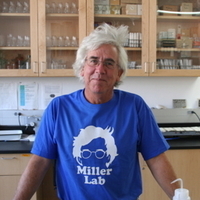Aim The network structure of food webs plays an important role in the maintenance of diversity and ecosystem functioning in ecological communities. Previous research has found that ecosystem size, resource availability, assembly history...
moreAim The network structure of food webs plays an important role in the maintenance of diversity and ecosystem functioning in ecological communities. Previous research has found that ecosystem size, resource availability, assembly history and biotic interactions can potentially drive food web structure. However, the relative influence of climatic variables that drive broad-scale biogeographic patterns of species richness and composition has not been explored for food web structure. In this study, we assess the influence of broad-scale climatic variables in addition to known drivers of food web structure on replicate observations of a single aquatic food web, sampled from the leaves of the pitcher plant (Sarracenia purpurea), at different geographic sites across a broad latitudinal and climatic range.
Location Using standardized sampling methods, we conducted an extensive ‘snapshot’ survey of 780 replicated aquatic food webs collected from the leaves of the pitcher plant S. purpurea at 39 sites from northern Florida to Newfoundland and westward to eastern British Columbia.
Methods We examined correlations of 15 measures of food web structure at the pitcher and site scales with geographic variation in temperature and precipitation, concentrations of nutrients from atmospheric nitrogen deposition, resource availability, ecosystem size and the abundance of the pitcher plant mosquito (Wyeomyia smithii), a potential keystone species.
Results At the scale of a single pitcher plant leaf, linkage density, species richness, measures of chain length and the proportion of omnivores in a web all increased with pitcher volume. Linkage density and species richness were greater at high-latitude sites, which experience low mean temperatures and precipitation and high annual variation in both of these variables. At the site scale, variation in 8 of the 15 food web metrics decreased at higher latitudes, and variation in measures of chain length increased with the abundance of mosquitoes.
Main conclusions Ecosystem size and climatic variables related to latitude were most strongly correlated with network structure of the Sarracenia food web. However, in spite of large sample sizes, thorough standardized sampling and the large geographic extent of the survey, even the best-fitting models explained less than 40% of the variation in food web structure. In contrast to biogeographic patterns of species richness, food web structure was largely independent of broad-scale climatic variables. The large proportion of unexplained variance in our analyses suggests that stochastic assembly may be an important determinant of local food web structure.
